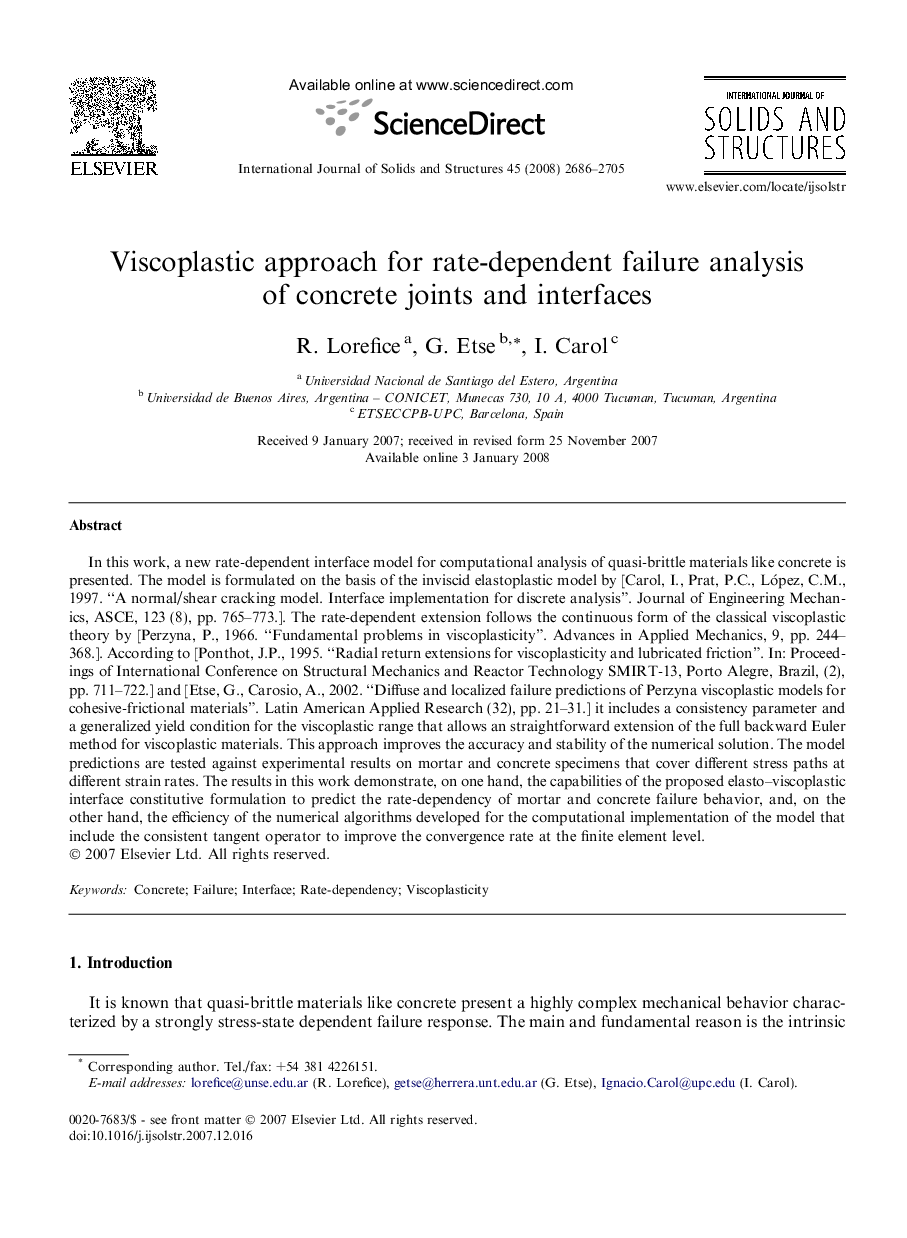| Article ID | Journal | Published Year | Pages | File Type |
|---|---|---|---|---|
| 280006 | International Journal of Solids and Structures | 2008 | 20 Pages |
In this work, a new rate-dependent interface model for computational analysis of quasi-brittle materials like concrete is presented. The model is formulated on the basis of the inviscid elastoplastic model by [Carol, I., Prat, P.C., López, C.M., 1997. “A normal/shear cracking model. Interface implementation for discrete analysis”. Journal of Engineering Mechanics, ASCE, 123 (8), pp. 765–773.]. The rate-dependent extension follows the continuous form of the classical viscoplastic theory by [Perzyna, P., 1966. “Fundamental problems in viscoplasticity”. Advances in Applied Mechanics, 9, pp. 244–368.]. According to [Ponthot, J.P., 1995. “Radial return extensions for viscoplasticity and lubricated friction”. In: Proceedings of International Conference on Structural Mechanics and Reactor Technology SMIRT-13, Porto Alegre, Brazil, (2), pp. 711–722.] and [Etse, G., Carosio, A., 2002. “Diffuse and localized failure predictions of Perzyna viscoplastic models for cohesive-frictional materials”. Latin American Applied Research (32), pp. 21–31.] it includes a consistency parameter and a generalized yield condition for the viscoplastic range that allows an straightforward extension of the full backward Euler method for viscoplastic materials. This approach improves the accuracy and stability of the numerical solution. The model predictions are tested against experimental results on mortar and concrete specimens that cover different stress paths at different strain rates. The results in this work demonstrate, on one hand, the capabilities of the proposed elasto–viscoplastic interface constitutive formulation to predict the rate-dependency of mortar and concrete failure behavior, and, on the other hand, the efficiency of the numerical algorithms developed for the computational implementation of the model that include the consistent tangent operator to improve the convergence rate at the finite element level.
